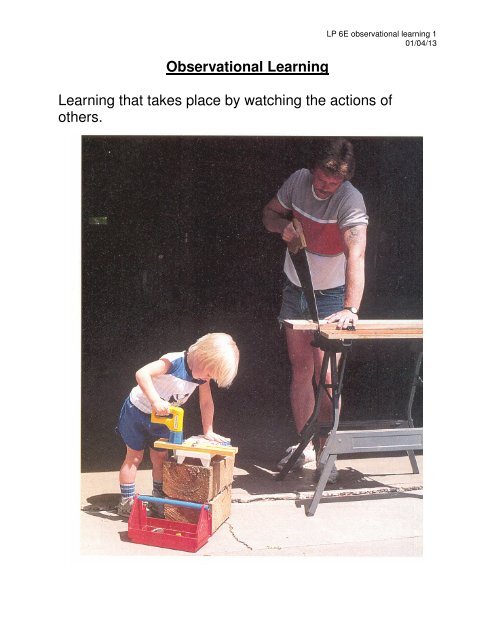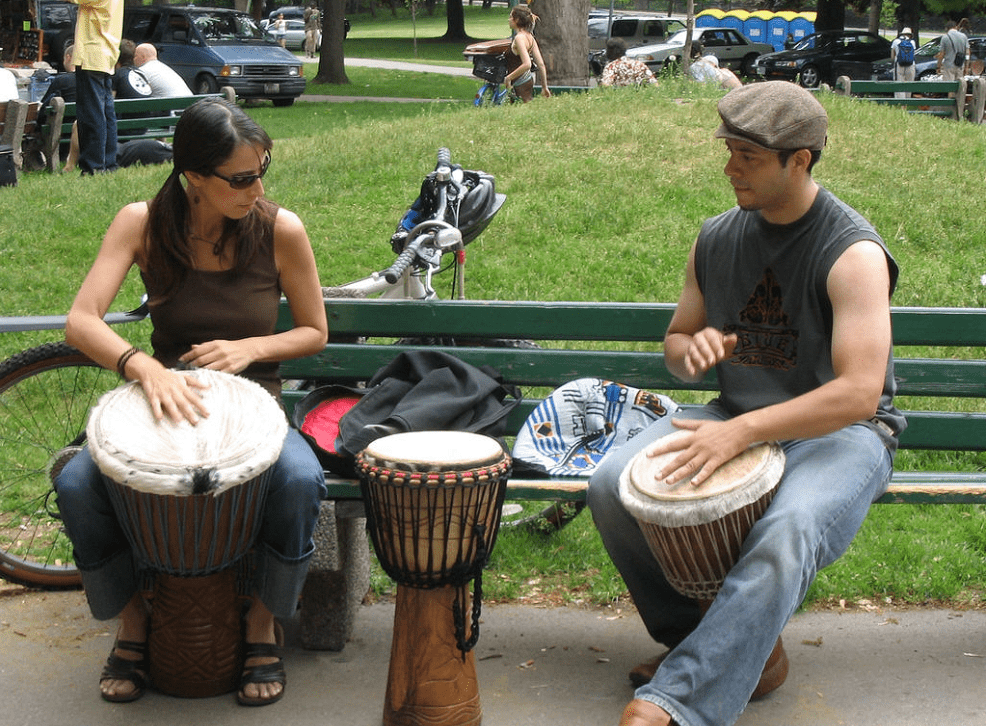
There are many ways in which people acquire skills. Some prefer to have auditory descriptions, others enjoy performing (i.e., kinesthetics) the skill, and yet others prefer seeing (i.e., visual) the skill executed. These methods are not mutually exclusive, and can occur in many combinations with varying levels of contribution. For the purposes of this discussion, I would like to explore observational learning (OL) and how it can improve performance in the absence of repetition.
Lee, Swanson, and Hall (1991) described the nature of repetition and the efficacy of random-practice over blocked-practice. Problem-solving was at the center of their argument, stating that repetition provided the opportunity or platform to allow this to occur. However, they also discovered that problem-solving could occur in the absence of kinesthetic exposure.

Problem-solving engages learners. It allows them to create permutations of a basic movement pattern in order to fit the changing parameters of the environment (Lee et al., 1991). It was discovered that observation of a person learning a skill yielded noticeable improvements when the observer performed the same task afterwards (Lee et al., 1991). This supports the existence and utility of the problem-solving concept in learning new skills, as there is no physical or repetitious involvement during observation, only a cognitive component. Moreover, Lee et al. (1991) noted that observers performed better when they watched a novice learning a skill rather than an expert. They postulated that it provided a better opportunity by encouraging the observer to problem-solve and become more cognitively engaged by learning from mistakes.
Knowing the efficaciousnessof OL allows us to use it as a tool in skill acquisition and refinement. One benefit is its convenience; OL does not require large stadiums, fields, or other participants. For example, a learner can watch a movement pattern or skill on a smart phone virtually anywhere at anytime. A second benefit is frequency without fatigue. That is, a person can observe a movement several times over and continue learning. A disadvantage of physical repetition is that as the body tires, movement efficiency and accuracy declines, hampering the learning effect. Finally, OL removes risk of injury. For example, a novice boxer can watch how to block a punch without having to succumb to the impact of the punch every time he tries to learn how to block.
In conclusion, observational learning has its place as a supplement in a well-constructed program. It provides insight and opportunity to continue learning beyond the confines of practice, in a way that is both efficient and safe.
References
Lee, T. D., Swanson, L. R., & Hall, A. L., (1991). What is repeated in a repetition? Effects of practice conditions on motor skill acquisition. Physical Therapy, 71(2), 150-156.
-Michael McIsaac
